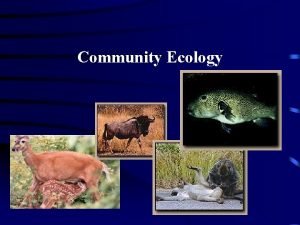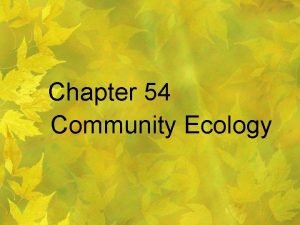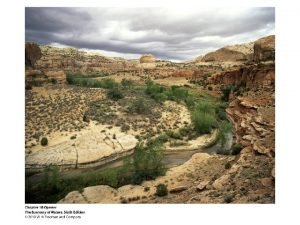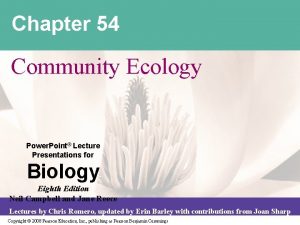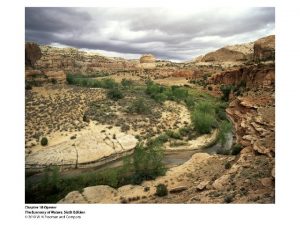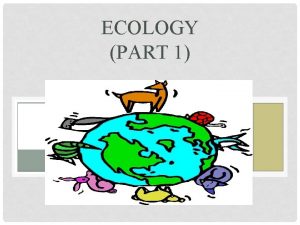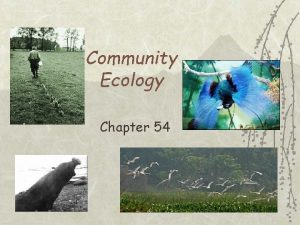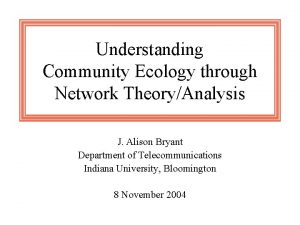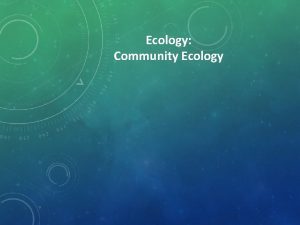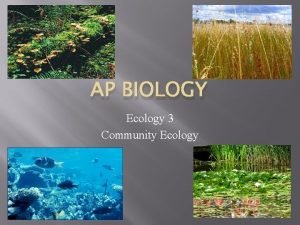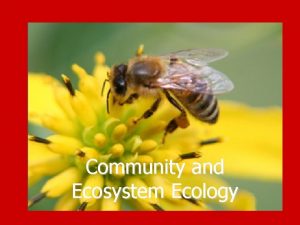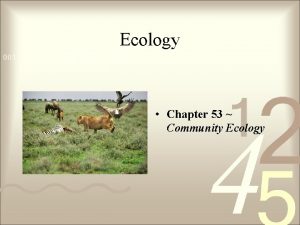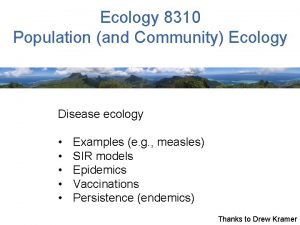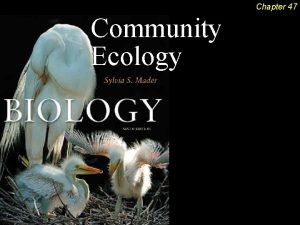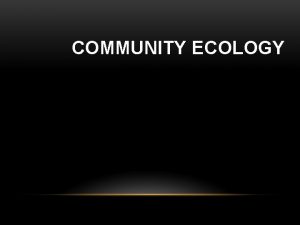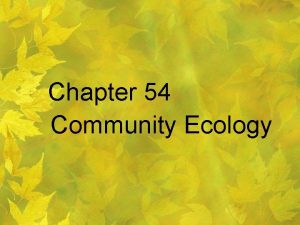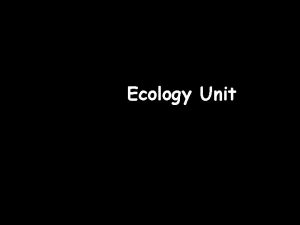Understanding Community Ecology through Network TheoryAnalysis J Alison


















- Slides: 18

Understanding Community Ecology through Network Theory/Analysis J. Alison Bryant Department of Telecommunications Indiana University, Bloomington 8 November 2004

Four Needs in Organizational Theory 1. to understand organizational evolution from the level of the community (e. g. , Aldrich, 1999; Astley, 1985; Baum, 1996; G. R. Carroll & Hannan, 1999; Di. Maggio, 1994; Ruef, 2000); 2. to more systematically understand the complex relationships within the community (Baum, 1996); 3. to incorporate network analysis in the study of community ecology (Di. Maggio, 1994); and 4. advance our understanding of organization by constructing network theories of organization (Salancik, 1995)

The coevolution of an organizational community is the evolution of the community’s network structure of interactions/relationships

ENVIRONMENT COMMUNITY Thingy 1 Gadget A Thingy 2 Gadget B Thingy 3 ORGANIZATION Gadget C Widget X Widget Y Widget Z POPULATION

Community Ecology Basics • Subsumes population ecology and bridges to environment – coevolution of populations of organizations • Incorporates punctuated equilibrium model of change (Tushman & Romanelli, 1985) • Open Environmental Space • Symbiosis and Commensalism –symbiotic relationship (+, +); –commensalistic relationships: • full mutualism (+, +) • partial mutualism (+, 0) • neutrality (0, 0) • predatory competition (+, -) • partial competition (-, 0) • full competition (-, -) • The purpose of the community is to buffer populations from the environment. (Hawley, 1950; 1982; Barnett, 1994)

Community Ecology through Network Theory/Analysis • The whole, not just the part • The structure of the network can elucidate the current “fitness” [or “effectiveness”] of the community? • Can look @ how structures of relationships overtime enable collective, as well as individual, interests • Better able to deal with multiple types of relationships

Networks Perspective on Community Ecology • The creation, maintenance, and dissolution of relationships Symbiosis and Commensalism within the community (network) is the key mechanism by which communities emerge, evolve, and collapse – –symbiotic relationship (+, +); ∆ in network structure explains–∆ in community fitness commensalistic • Articulation of community ecology concepts in network relationships: terms: –Variation, Selection, & Retention • full mutualism (+, +) • partial mutualism (+, 0) –Density Dependence –Open Environmental Space • neutrality (0, 0) –Punctuated Equilibrium • predatory competition (+, -) –Symbiotic and Commensalistic Relationships • partial competition (-, 0) • full competition (-, -) • An “effective” network will buffer populations from the environment.

Phases of Community Coevolution Emergence Maintenance Self-Sufficiency Transformation Dissolution

An example…

The Children’s Television Community Who? When? Where? Educational Content Creators Entertainment Content Creators Content Programmers Toy Companies Advertisers Governmental Bodies Advocacy Groups Philanthropic Organizations 1953 -2002 United States How? & Why?

ENVIRONMENT COMMUNITY Governmental Bodies Content Programmers ORGANIZATION Educational Content Creators POPULATION

A Very Brief History of Children’s TV 1940 s 1950 s 1960 s 1970 s 1980 s 1990 s 2000 s

Methodology Data Collection: 1. In-depth Interviews 2. Network Data Questionnaire 3. Historical Records Data Coding: Participants: 20 key players in each population over the past 50 years, e. g. , Creators of Sesame Street and Children’s Television Workshop 560 Network Ties (10 Time Periods, 8 x 8 Network Matrices) Dir. of Research, Viacom Media/former Dir. of Research, Nick Jr. /Nickelodeon President, Mediascope/former VP for Programming, ABC Family & Fox Family Key Environmental Events Founder, Action for Children’s Television Former Director of Research, Children’s Television Workshop Director, Center for Media Education President, DIC Entertainment

Educational Content Creators Entertainment Content Creators Content Programmers Toy Tie-In Companies Advertisers Governmental Bodies Advocacy Groups Philanthropic Organizations Educational Content Creators relationship to Entertainment Content Creators relationship to Governmental Bodies relationship to Advocacy Groups relationship to Content Programmers relationship to Toy Tie-In Companies relationship to Advertisers relationship to Philanthropic Organizations relationship to

Environmental Events in the History of the Children’s TV Community Public Broadcasting Act of 1967 1963 -1967 Penetration of Cable 1983 -1987 Children’s Television Act of 1990 1988 -1992 Three-Hour Rule (Addendum to CTA in 1996) 1993 -1997

Network Evolution


Limitations/Future Directions Limitations: Data Collection • One case study • Network Data Questionnaire • Macro-level Events Data Analysis • Small networks • Need to use dynamic network analysis Future Directions: • Further data collection (children’s media community and other communities) • More multilevel, emergent analysis
 Is india near the equator
Is india near the equator Ecosystem vs community
Ecosystem vs community Community ecology
Community ecology Chapter 3 section 1 community ecology answer key
Chapter 3 section 1 community ecology answer key Chapter 54: community ecology answer key
Chapter 54: community ecology answer key Organism
Organism Definition of community ecology
Definition of community ecology More diverse
More diverse Chapter 5 evolution and community ecology
Chapter 5 evolution and community ecology Ecosystems interactions
Ecosystems interactions Community definition ecology
Community definition ecology Ecology examples
Ecology examples Symbiosis examples
Symbiosis examples Chapter 54 community ecology
Chapter 54 community ecology I can deepen my understanding through
I can deepen my understanding through Through one man sin entered
Through one man sin entered Furcation involvement classification
Furcation involvement classification Tangent-sawing
Tangent-sawing Night of the scorpion talks about
Night of the scorpion talks about


